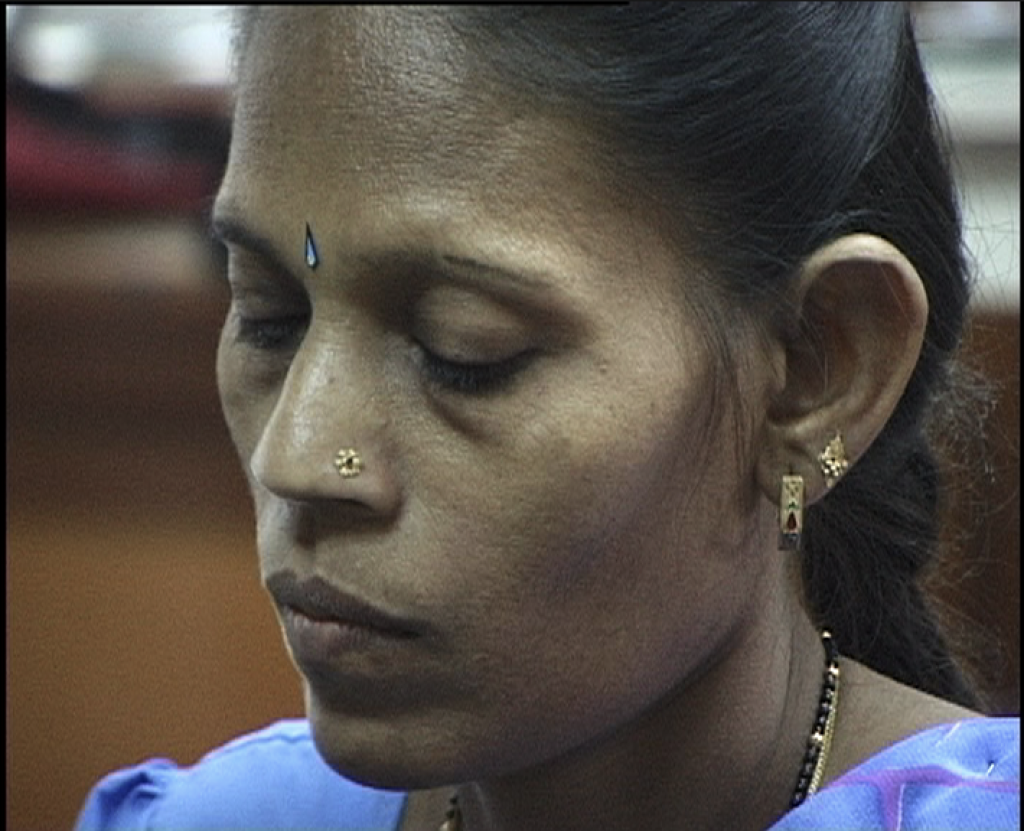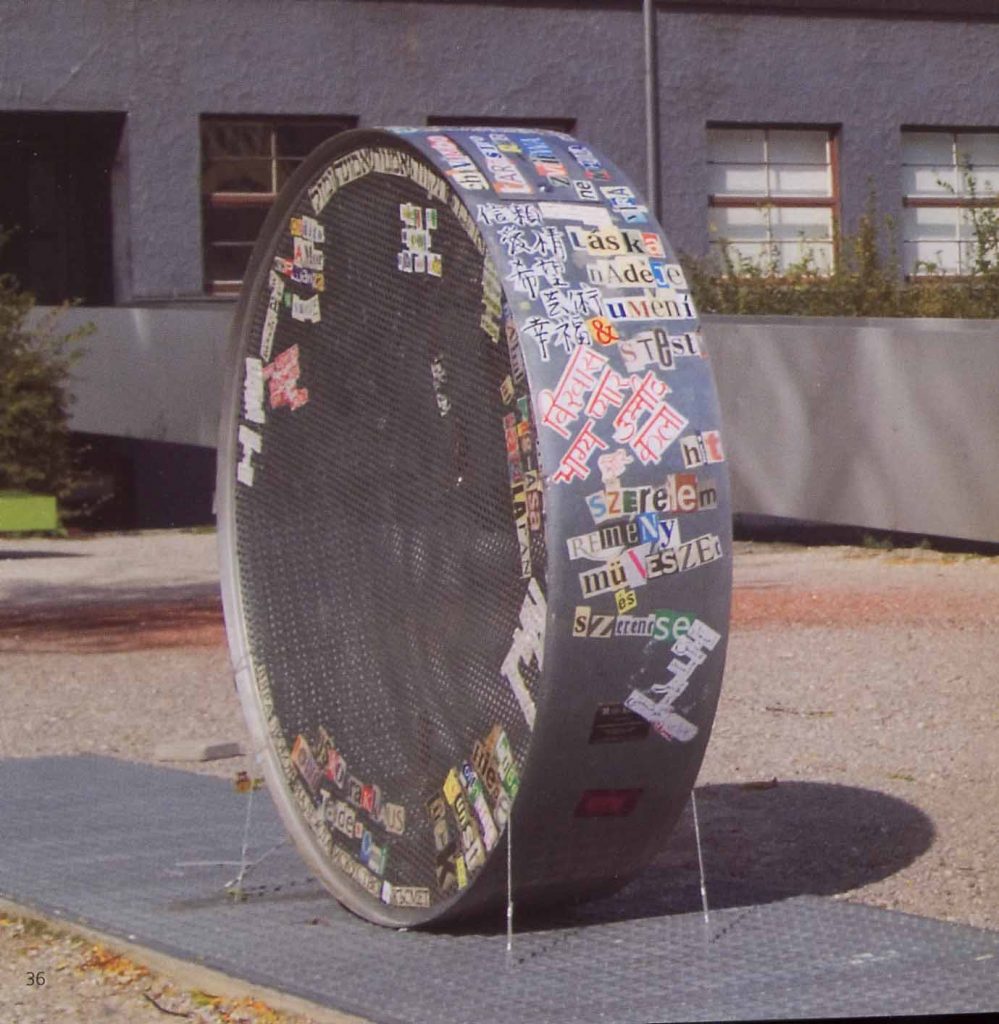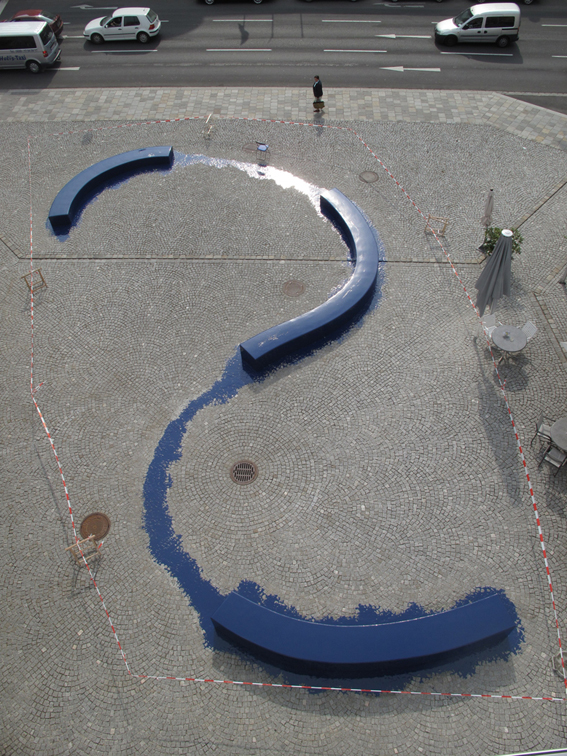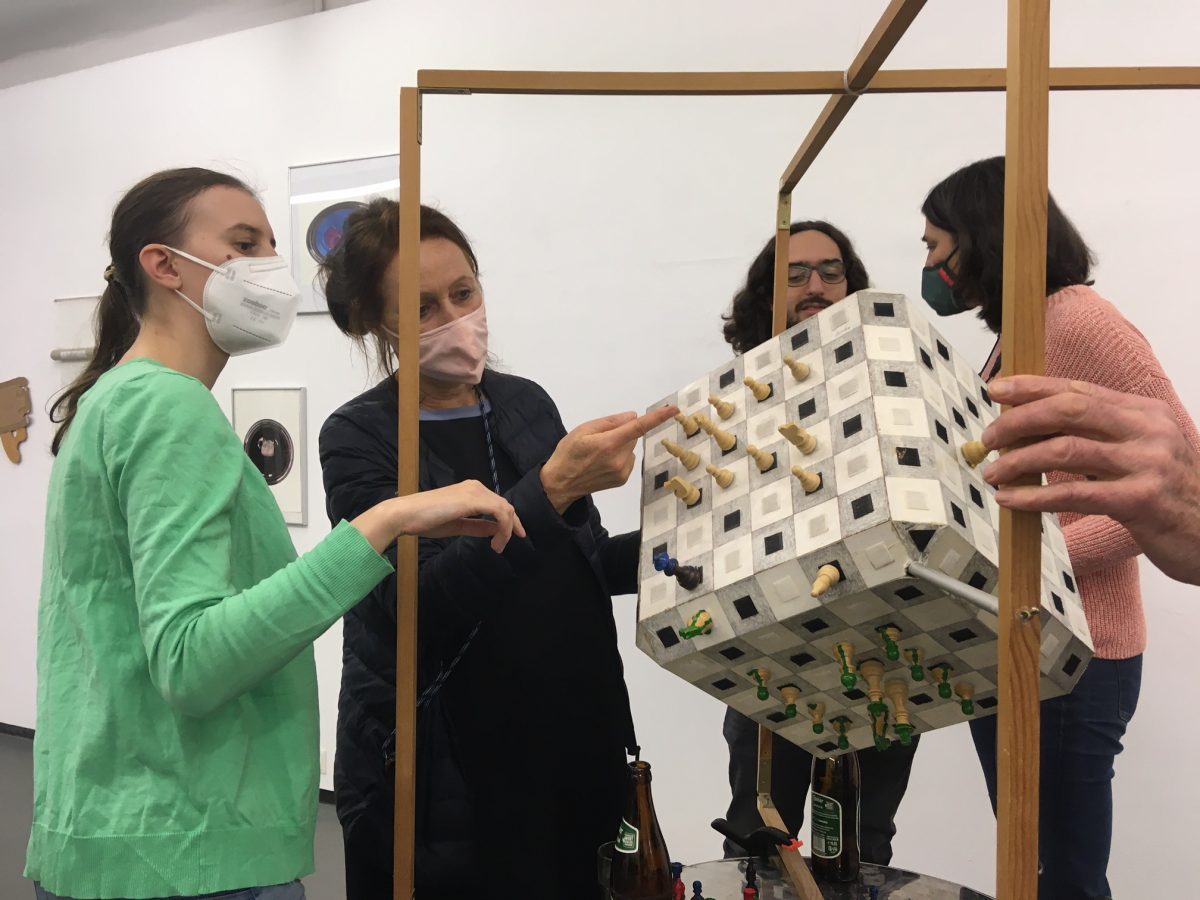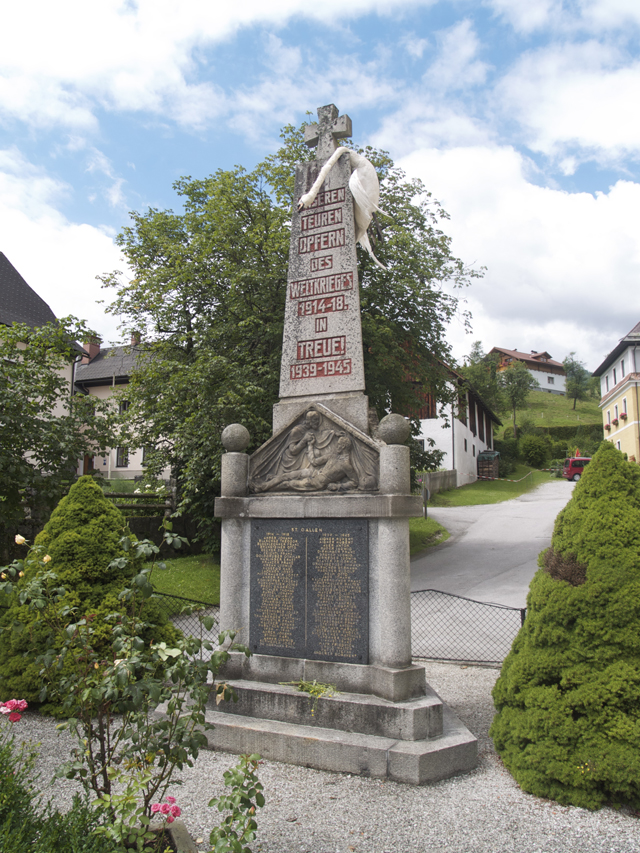Fadenbrand – on the exhibition of works by PRINZGAU/podgorschek
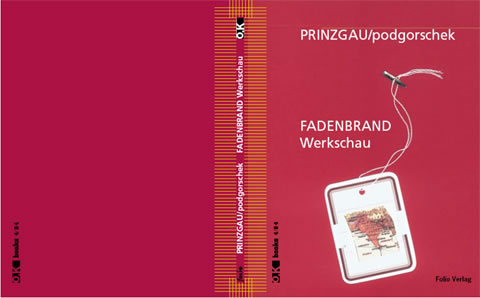
Genoveva Rückert & Martin Sturm
PRINZGAU/podgorschek create their incisive and lighthearted works within the dialectic of use and rededication, functional and aesthetic value, specification and redefinition.
The artists like to keep their work suspended – free from any strict categorization according to artistic genre, they move smoothly between visual art, architecture, design and film. Everything they get their hands on can become a medium for their artistic intervention. With their rich inventiveness in coming up with new artistic strategies, their works might manifest any possible stage of the process – from the initial draft, through architectonic improvisations, to precisely executed objects. They delve deeply into social and political issues – whether traffic, the economy, or working conditions – treating these subjects on a symbolic level. Mischievously questioning our conventional patterns of perception, they offer irritating approaches and astonishing solutions, sometimes in the form of detailed sketches, sometimes as radical large-scale concepts.
This show of their work, which was developed in the course of an artist-in-residence stay at O.K, includes the installation Fadenbrand (2004), and for the first time offers a survey of the artists‘ more than twenty years of collaboration and their multifaceted output. The spectrum ranges from works in the public space, including what is probably the most famous of these, the excavated highway section near Mistelbach ( Die Entdeckung der Korridore, 1995), through multimedia works, objects, and large-area topographical planning, to a broad cinematic oeuvre, which forms a separate focal point of the exhibit. In addition to creating a comprehensive video portrait in the O.K media studio, Paarläufer (2004), they also worked through and reorganized the film and video archive.
This overview of the artists‘ work includes two repeat installations – the first is the projectile apparatus ironically entitled the right man at the right place (1996). Unlike at its debut presentation in 1996 in the New Gallery at the Landesmuseum Joanneum in Graz, where the work was shown as a performative, interactive installation, this work is exhibited more like a classic museum piece at O.K – as a static installation. The fountain sculpture Ressourcengeflechtsturm (1995) was newly installed for the show, in the O.K. stairwell. In this piece, water flows continuously over a tower of stacked tables. The flow of water becomes a metaphor for everything that crosses a table and is thus trickels away.
The distribution of resources against the background of the social conditions of textile workers in India is the theme of the newly developed multimedia work Fadenbrand (2004). Alongside a documentary film about their research trip, a textile work process is taken up in the large hall of the O.K and the square outside. Threads redirected over numerous bobbins run through and out of the room onto the square in front of the building, and are rewound in the opposite direction. Like a thread machine, the constantly turning end points take up all the material generated throughout the course of the exhibition, filling up around the middle and becoming fat and round.
Spuren der „Leeren Karyatide,“ 1994 / 2004
As their contribution to the exhibition „Die Augen der Architektur“ (1994), PRINZGAU/podgorschek drilled a hole through the O.K from attic to ground floor, adding a vertical element to the otherwise horizontal building. Through this hole, 40 cm in diameter, drops of water fell from attic to cellar onto a hot steel plate. The work called into question the contemporary standing of „art in architecture.“ With just 1% of the building budget normally set aside for art, it’s often the case that, instead of meaningful, coherent aesthetic solutions in cooperation with architects, artists and clients, „artworks“ are simply implanted on walls and empty surfaces after construction is finished. The theme of the exhibition was to reflect on basic issues in architecture from an unusual perspective – the connection between art and architecture, or more precisely the architectonic handling of „spaces“ is scrutinized in an artistic space freed from the influence of the building’s owner.
Over the years, the artists have created a large number of objects, constructions, furniture, architectural works, considerations, drawings, collages, photographs, paintings, sketches, and models. To immerse yourself in the world of PRINZGAU/podgorschek, you need only enter the piece entitled Wunderkammer / Chaosraum , the artists‘ living and working space transferred to the O.K. The works here show every stage of the artistic process – from initial draft, through architectonic improvisations, to precisely executed objects. The frequently multi-part titles of their work describe the theoretical space to which the works refer, specify a direction for interpretation, and at the same time convey the pair’s working methods. The environment in which they live, the language of the materials they use, and their functional and aesthetic rededications, form the backdrop for their experiments and material studies. Many of their experimental projects are the result of long years of research into a particular aesthetic, expressing a specific cultural practice in a provocative and ironic manner. Their playful way of approaching a subject stands for an attitude and a way of thinking that is not exclusively rational, and which gives rise to the multiple layers of meaning in their works. Their habit of repeatedly renaming their own works shows that their meaning is not static, but instead depends on the context at hand.
Many of the duo’s concepts and utopias come about within the dialectic between space and materiality, and they prefer to express this by working with everyday, used materials. This material still resonates with its original context and, with a wink of the eye, challenges the tectonic structure and technology behind the artists‘ architectonic improvisations.
The fountain piece entitled Ressourcengeflechtsturm (2004) was first realized for the exhibition “ Hall²)0 – der Biß ins Wasser“ (1995), for which PRINZGAU/podgorschek also played the roles of curators and catalogue editors (together with Roemer van Toorn). The structure was made up of tables stacked on top of one another in several levels in front of the Kunsthalle Tirol. The water drips and runs from the tables down the table legs standing in buckets and onward over the basin. The flow of water becomes a metaphor for the „trickle down effect,“ the redistribution of resources.
„the right man at the right place,“ 1996
Immediately after the trigger is pulled, the bullet orbits twice around the structure and lands at the back of the head – albeit protected by a bulletproof steel plate. A round projectile glides through a metal pipe bent into spiraling concentric circles and lands in a metal cage.
This installation was first realized in 1996 in the studio of the New Gallery at the Landesmuseum Joanneum in Graz, at the invitation of Werner Fenz. After the first shot was fired, a series of lectures took place with the invited guests, including culture scholar Wolfgang Pauser, philosopher Peter Berz, artist Sabine Bitter (Bitter/Weber), and ethnologist Verena Traeger, followed by a music piece by Bruno Liberda.
FADENBRAND, 2004
In 2004, a women’s solidarity group undertook a research trip to India’s textile production sites to investigate to what extent volunteer commitment to ecological and social causes (the codes of conduct created in the West) really contributed to improving working conditions for women in the South, or whether they only serve to assuage consumers‘ guilt. In these production plants, which include some that supply multinational corporations, social exploitation and a disregard for environmental laws can be witnessed as the other side of the global economy.
PRINZGAU/podgorschek accompanied this trip and expressed their reactions in their multi-part multimedia work „Fadenbrand.“ They documented their research directly in their video „Made in Dignity.“
The installation the artists created during their stay at O.K recreates a textile manufacturing process in the large hall of the museum. Threads redirected over numerous bobbins run through and out of the room onto the square in front of the O.K, and are rewound in the opposite direction. Like a thread machine, the constantly turning end points take up all the material generated throughout the course of the exhibition, filling up around the middle and becoming fat and round.
Glaube, Liebe, Hoffnung, Kunst und Glück, 2002
Good luck slot machine. Inscribed with the work’s title translated into more than 30 languages, this galvanized, perforated metal drum created by PRINZGAU/podgorschek was exhibited for the first time in 2002 at the MuseumsQuartier in Vienna. It is 39 cm wide and 125 cm in diameter and has a coin slot, as well as two bongo drums and a basin that make sounds as the money drops. Dropping in money will probably bring good luck – at least the clinking coins sound propitious – and the proceeds go towards supporting worthy causes, such as future art activities.
Fadenbrand – zur Werkschau von PRINZGAU/podgorschek
Genoveva Rückert & Martin Sturm
In der Dialektik von Nutzen und Umwidmung, funktionalem und ästhetischem Wert, Vorgabe und Neu-Definition entstehen die pointierten und leichtfüßigen Arbeiten von PRINZGAU/podgorschek.
Die KünstlerInnen halten Ihre Arbeit gerne in der Schwebe – frei von einer Zuordnung in künstlerische Genres bewegen Sie sich zwischen Bildender Kunst, Architektur, Design und Film.
Alles was sie angreifen kann Träger Ihrer künstlerischen Interventionen werden. Vielfältig in ihren künstlerischen Strategien, manifestieren sich ihre Arbeiten in allen möglichen Stadien – vom Entwurf über architektonische Improvisationen bis zum präzise ausgeführten Körpern. Ihr Interesse gilt sozialen und politischen Fragestellungen, sei es Verkehr, Ökonomie oder Arbeitsbedingungen, die sie auf einer symbolischen Ebene verhandeln. Schelmisch hinterfragen sie gängige Wahrnehmungsmuster, bieten irritierende Ansätze und erstaunliche Lösungen, egal ob in kleinteiligen Skizzen oder radikalen großräumigen Konzepten.
Die Werkschau, die im Rahmen des Artists in Residence Aufenthalt im O.K entwickelt wurde, bietet neben der eigens für die Ausstellung erarbeiteten Installation Fadenbrand , 2004 erstmals einen Überblick über die zwanzigjährige Zusammenarbeit und ihr vielschichtiges Werk. Von Arbeiten im öffentlichen Raum, deren wohl bekanntestes das freigelegte Autobahnstück bei Mistelbach ( Die Entdeckung der Korridore, 1995) ist, über Multimedia Arbeiten, Objekte, großräumige topographische Planungen bis zu einem breiten filmischen Oevre reicht das Spektrum. Dem filmischen Schaffen ist ein eigener Schwerpunkt gewidmet. Neben dem im O.K Medienstudio erstellten umfassenden Video-Porträt Paarläufer , 2004 wurde das Film- und Videoarchiv neu aufbereitet.
Im Rahmen der Werkschau sind zwei Installationen wieder zu sehen – der ironischer Weise mit the right man at the right place , 1996 betitelte Schussapparat. Entgegen der Präsentation 1996 in der Neuen Galerie am Landesmuseum Joanneum in Graz als performativ interaktive Installation wird die Arbeit im O.K fast museal – als ruhige stehende Installation gezeigt. Die Brunnenskulptur Ressourcengeflechtsturm von 1995 wurde in der Schlucht des O.K neu installiert. Unaufhörlich rinnt Wasser über einen Turm aus gestapelten Tischen. Der Fluss des Wassers wird zu einer Metapher dafür was alles über die Tische geht und das versickert.
Ressourcenverteilung vor dem Hintergrund sozialer Bedingungen von Textilarbeiterinnen in Indien – ist Thema der neu entwickelten Multimedia Arbeit Fadenbrand, 2004 . Neben einem Dokumentarfilm über Ihre Recherchereise wird im großen Saal und am Vorplatz des O.K ein textiler Arbeitsvorgang aufgenommen. Fäden umgelenkt über zahlreiche Spulen ziehen sich durch und aus dem Raum auf den Vorplatz und werden gegenläufig aufgespult. Wie eine Garnmaschine nehmen die sich stetig drehenden Endpunkte über die Dauer der Ausstellung alles Material auf, füllen sich um die eigene Mitte und bekommen eine satte Rundung.
Spuren der „Leeren Karyatide“, 1994 / 2004
PRINZGAU/podgorschek durchbohrten als Ihren Beitrag zur Ausstellung „Die Augen der Architektur“ 1994 das O.K vom Dachboden bis zum Erdgeschoß und setzen dem horizontalen Bau eine Vertikale entgegen. Ein Loch von 40 cm Durchmesser sorgte für freien Flug von Wassertropfen vom Dach bis in den Keller auf eine glühende Stahlplatte. Ihre Arbeit hinterfragt die Situation von „Kunst am Bau“. Mit 1% der Bausumme werden oft an Stelle von sinnvollen ästhetischen Gesamtlösung in Kooperation von ArchitektInnen, KünstlerInnen und Bauherren, nach Abschluss der Bauaufgaben „Kunstwerke“ an Wänden und Restflächen implantiert. Die Ausstellung machte sich zum Thema Grundfragen der Architektur aus ungewohnter perspektive zu reflektieren – den Zusammenhang zwischen Kunst und Architektur, genauer der architektonische Umgang mit „Räumen“ wird im Bu-Herren-freien Kunstraum zu hinterfragen.
Über die Jahre entstanden zahlreiche Objekte, Konstruktionen, Möbel, Architekturen, Überlegungen, Zeichnungen, Collagen, Fotografien, Malereien, Skizzen, Modelle.
Eintauchen in die Welt von PRINZGAU/podgorschek kann man in der Wunderkammer / Chaosraum , ihrem ins O.K transferierten Wohn- und Arbeitszimmer. Ihre Arbeiten manifestieren sich in allen möglichen Stadien des Seins – vom Entwurf über architektonische Improvisationen bis zum präzise ausgeführten Körper. Die oft mehrteiligen Werktitel beschreiben den theoretischen Raum, auf den sich ihre Arbeiten beziehen, geben eine Interpretationsrichtung vor und vermitteln gleichzeitig die Arbeitsweise der beiden. Ihr Lebens-Umraum, die Sprache des Materials und ihre funktionale und ästhetische Umwidmung bilden den Hintergrund ihrer Experimente und Materialstudien. Viele ihrer experimentellen Projekte sind Teil einer langjährigen Recherche in einer Ästhetik, die auf provokante und ironische Weise eine spezifische kulturelle Praxis ausdrückt. Der spielerische Zugang steht für eine nicht ausschließlich rationale Herangehensweise / Denkweise, durch die erst die Mehrdeutigkeit ihrer Arbeiten entsteht. Dass die Bedeutung keine feststehende ist, zeigt auch die mehrfache Umbenennung der eigenen Arbeiten, je nach Kontext.
In der Dialektik von Raum und Materialität entstehen zahlreiche Konzepte und Utopien des Paares, wobei sie bevorzugt alltägliches und gebrauchtes Material einsetzen. Es verweist auf den ursprünglichen Kontext und hinterfragt immer mit einem Augenzwickern bei ihren architektonischen Improvisationen die tektonische Struktur und Technologie.
Erstmals realisiert wurde der Brunnen Ressourcengeflechtsturm, 2004 für die Ausstellung “ Hall²)0 – der Biß ins Wasser „, 1995, in der PRINZGAU/podgorschek auch in der Rolle als KuratorInnen und HerausgeberInnen (mit Roemer van Toorn) des Kataloges auftraten. In mehrere Ebenen vor der Kunsthalle Tirol übereinander gestapelte gebrauchte Tische bildeten die Struktur. Das Wasser tröpfelt und rinnt von den Tischplatten über die Kübeln stehenden Tischbeine und über das Becken ab. Der Fluss des Wassers wird zu einer Metapher für Versickern und Umverteilen von Ressourcen.
„the right man at the right place, 1996
Kaum abgedrückt, landet die Kugel nach zwei Umdrehungen direkt am Hinterkopf – allerdings geschützt durch eine kugelsichere Stahlplatte. Ein rundes Projektil gleitet durch die spiralförmig angeordneten, konzentrischen Kreisen aus gebogenen Metallrohr und landet in einem Metallkäfig.
Diese Installation wurde 1996 im Studio der Neuen Galerie am Landesmuseum Joanneum in Graz auf Einladung von Werner Fenz realisiert. Nach dem ersten Schuss fand eine Vortragsreihe mit den geladenen Gästen, dem Kulturwissenschaftler Wolfgang Pauser, Philosoph Peter Berz, der Künstlerin Sabine Bitter (Bitter/Weber) und der Ethnologin Verena Traeger, sowie ein Musikstück von Bruno Liberda statt.
FADENBRAND, 2004
Inwieweit freiwillige soziale und ökologische Verpflichtungen (die im Westen geschaffenen Codes of Conduct) von Unternehmen tatsächlich zur Verbesserung der Arbeitsbedingungen von Frauen im Süden beitragen oder nur zur Beruhigung von KonsumentInnen dienen, ging eine 2004 von der Frauensolidarität initierten Reise zu Textilarbeit in Indien nach. Produktionsstätten, u. a. für internationale Konzerne arbeitenden Zulieferer, zeigt sich soziale Ausbeutung und Missachtung ökologischer Gesetze als Kehrseite der globalen Ökonomie.
PRINZGAU/podgorschek begleiteten diese Reise und reagierten mit Ihrer mehrteiligen Multimedia-Arbeit „Fadenbrand“ darauf. Unmittelbar wird die Recherche in der entstandenen Video-Dokumentation „Made in Dignity“ aufgearbeitet.
Die im Zuge des Aufenthalts im O.K entstandene Installation im großen Saal nimmt einen textilen Arbeitsvorgang auf. Fäden umgelenkt über zahlreiche Spulen ziehen sich durch und aus den Raum auf den Vorplatz und werden gegenläufig auf- und abgespult. Wie eine Garnmaschine nehmen die sich stetig drehenden Endpunkte über die Dauer der Ausstellung alles Material auf, füllen sich um die eigene Mitte und bekommen eine satte Rundung.
Glaube, Liebe, Hoffnung, Kunst und Glück, 2002
Geldeinwurfs-Glücksscheiben. In mehr als 30 Sprachen mit dem Titel beschrieben wurde die verzinkte, perforierte Metalltrommel von PRINZGAU/podgorschek erstmals 2002 im MQ in Wien aufgestellt. Sie ist 39 cm breit, hat einen Durchmesser von 125 cm, einen Geldeinwurf-Schlitz und enthält zwei Bongos und eine Becken, die das Geldes klingen lassen. Gewiß ein Einwurf bringt wahrscheinlich Glück – zumindest dem Klang des Geldes nach – und der Erlös unterstützt darüber hinaus u. a. zukünftige Kunstaktionen.


